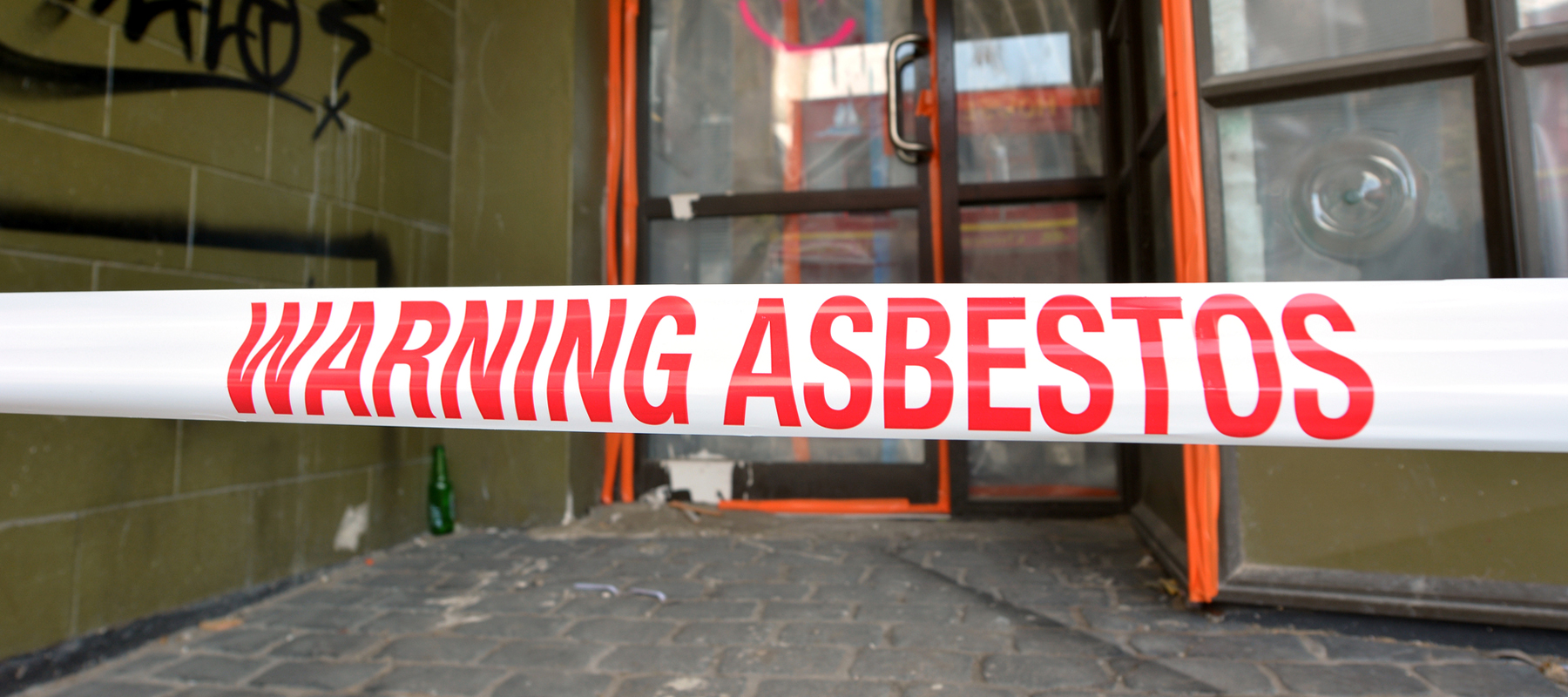Asbestos Removal Pricing, FAQs & Warning Signs of Asbestos Hazards
Last Updated: October 03, 2023

Fact Checked By: Ryan Maguire
On This Page
Asbestos is a fibrous silicate mineral that, prior to 1980, was used in a wide variety of building materials and other products because of its strength, fire and heat resistance, affordability, and other desirable characteristics. In the 1970s, however, there began to emerge solid evidence that asbestos could cause health problems such as lung disease and cancer. The Environmental Protection Agency (EPA) has since banned the use of almost all asbestos products.
But because asbestos was used so extensively in previous decades, many buildings still contain the material. Although not dangerous when intact, asbestos poses major health threats when it becomes airborne and must be removed by a professional who has been certified in asbestos abatement (asbestos removal). To learn more about this process and how much it costs, continue reading.
The Basics of Asbestos Abatement #
If your house was built prior to the 1980s, there's a chance it could contain asbestos. Areas of the home that might contain asbestos include floor and ceiling tiles, roof shingles and flashing, insulation, siding, plaster or drywall compound, and more. To learn more about asbestos in the home, read up on the EPA's asbestos website.
If you aren't sure whether your home contains asbestos, consider having it professionally tested. In the event that testing reveals the presence of asbestos, you don't necessarily need to have it removed. After all, if left undisturbed, asbestos doesn't really pose a health concern. Still, some homeowners decide to play it safe and have the carcinogenic material stripped out.
When choosing the latter option, you'll need to hire a properly licensed professional, as it's illegal in most states to allow a non-licensed individual to removed asbestos. Once you've secured a contractor, the removal process, which may not take as long as you think, can begin. The typical stages of asbestos removal include removing all furniture and other items from the work area, sealing off the area, bringing in powerful, specialized fans and filters, removing the affected areas, and disposing of the hazardous materials in a government-approved location. The entire process might take a week or two depending on the size of the contaminated area.
Asbestos Abatement Costs #
Asbestos abatement involves removing asbestos-containing materials (ACM) safely to prevent exposure and health hazards. Here are typical asbestos removal costs:
Asbestos Inspection
$300 to $500 for a basic inspection to identify ACM
$1,000 to $2,000+ for a full pre-abatement survey by a certified professional
Removal Preparation
$500 to $1,500 for containment setup - sealing furnishings, installing plastic barriers, setting up decon chamber
$1,000 to $5,000+ for demolition prep if walls/ceilings require removal
$50 to $500 per window for custom window sealing
Direct Abatement Costs
$100 to $300 per square foot for simple mechanical insulation removal
$200 to $400 per square foot for straightforward ceiling/floor tile removal
$400 to $1,000 per square foot for difficult wall or siding tear-out
Hard abatement costs range from $25,000 to $100,000+ depending on scope
Additional Services
HEPA vacuuming and cleaning post-abatement - $500 to $2,000
Waste disposal fees - $1,000 to $5,000+
Final clearance testing - $500 to $2,000
Asbestos abatement costs vary greatly based on the removal scope, accessibility, precautions required, and overall complexity. Get quotes from at least 3 certified asbestos contractors.
Asbestos Abatement Cost Calculator #
Total Estimated Cost:
Asbestos Removal Cost Examples #
A homeowner in California paid $1,800 to remove asbestos insulation from around their heating ducts and water pipes. This included containment, abatement, and clearance testing.
A school district in Texas was charged $28,500 to remove floor tiles containing asbestos from a wing of a high school building. This covered a 4000 sq ft area.
A factory owner in Michigan paid $65,000 for full asbestos abatement throughout their 15,000 sq ft facility. Removal included insulation, wall and ceiling panels, floor tiles, and transite siding.
A church in New York was quoted $175,000 for a licensed abatement company to remove all ACM identified in a pre-renovation survey. This included multiple pipe and boiler insulation types.
A homeowner in Colorado paid $4,800 to have asbestos shingles safely taken off their 1500 sq ft home along with felt underlayment and any contaminated wood.
A landlord in Utah was charged $20,000 by a certified asbestos contractor to remove all popcorn ceiling texture that tested positive for asbestos in 12 apartment units.
A hospital in Florida contracted an abatement company to remove asbestos-containing plaster walls and insulation for $510,000 to prepare a section of the building for renovation.
These real-world examples help illustrate the high degree of variability in asbestos removal costs based on factors like the age of the building, type and extent of abatement, and local labor rates.
Signs You May Have Asbestos in Your Home #
Construction date - Asbestos use was common in construction before 1980. Homes built prior to this have a higher likelihood of containing asbestos.
Flaking ceiling or wall textures - Popcorn, stipple, or "cottage cheese" spray-on ceilings can contain asbestos and may start flaking over time.
Damaged floor or ceiling tiles - Some older vinyl floor tiles and acoustic ceiling tiles contain asbestos. Cracked or broken tiles may release fibers.
Pipe, duct, or boiler insulation - White, paper-like wrap on pipes, air ducts, and boilers used for insulation may be asbestos-containing. Damage, tears, or debris may be present.
Roof or siding shingles - Some cement-based composite shingles used before 1980 contain asbestos and may appear worn or slowly deteriorating.
Vermiculite attic insulation - Vermiculite insulation produced before 1990 could contain trace asbestos. It has a shiny, flaky appearance.
Wall and ceiling plaster - Plaster used for walls and ceilings prior to 1980 may contain asbestos which shows age cracks or deterioration.
The only way to confirm asbestos is through lab testing. If signs above are noticed in an older building, consider professional testing to identify any hazards.
Questions to Ask Asbestos Abatement Companies #
Are you licensed for asbestos removal in this state? Can I see your license?
Do you carry liability insurance and worker's compensation coverage?
Will you provide a detailed inspection report with sample testing?
What is your abatement plan and schedule for this project?
What safety precautions and containment procedures do you use?
Do you have safety records of any EPA violations or job site incidents?
How do you dispose of asbestos waste?
How many asbestos removal projects like this have you completed?
Can you provide references from previous asbestos jobs?
Do you offer any kind of guarantee or warranty for your work?
What are the total all-inclusive costs with no hidden fees?
Can you provide a fully detailed written estimate for the project?
Do you offer competitive financing options for asbestos abatement?
Carefully screening companies on safety, proper licensing, experience, and overall professionalism is important to find a qualified asbestos abatement contractor you can trust.
